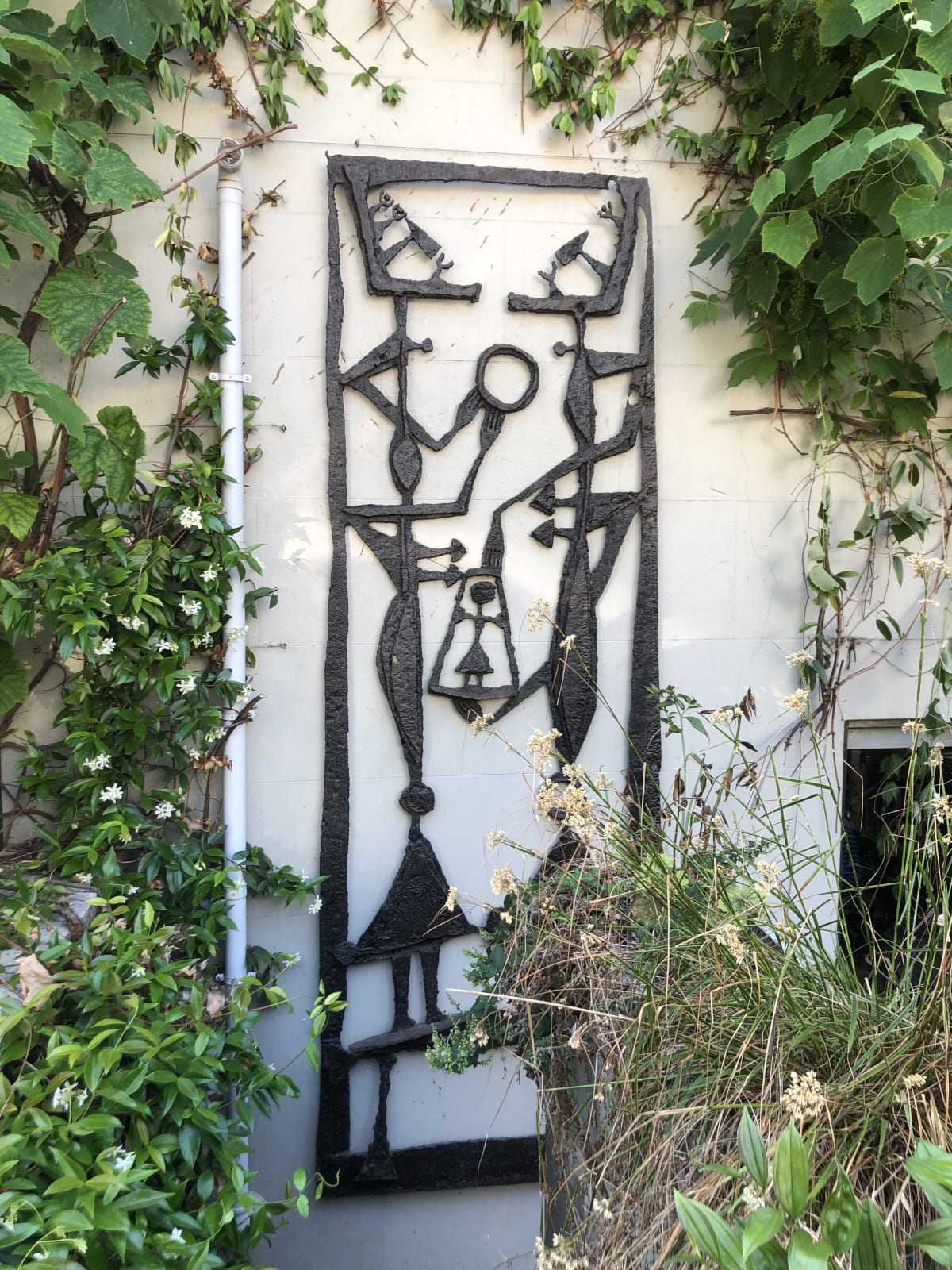Geoffrey Clarke British, 1924-2014
116 7/8 x 41 3/4 x 4 in
Further images
In 1950 whilst studying at the Royal College of Art Geoffrey Clarke enrolled on a two week course to learn how to weld at the British Oxygen Company in Cricklewood. With traditional materials either in short supply or prohibitively expensive welding gave many sculptors of this era an opportunity to use lesser considered materials in new ways and at scale. Clarke was instantly taken with the technique and envisaged transforming the Nissan huts that comprised the sculpture department at the RCA into a smithy.
Like Chadwick and Butler, Clarke mastered the techniques that enabled both fine and intricate welded pieces as well as larger works. On the whole he preferred to use second hand metal for its interesting texture and would often wait outside scrap metal yards to collect piece from the ground that had been pounded by trucks rolling in and out of the yard. Clarke recalled his first beguiling experiences of welding:
"You are intrigued enough just by simply bringing a rod of metal to red-hot and bending it at right angles with ease. Simple things like that, and when you melt the rod it runs back on itself into a little head."
In the autumn of 1950 Clarke received a commission for a 20ft wide decorative screen for the Festival of Britain’s Transport Pavilion designed by Rodney Thomas and his practice Arcon. Clarke designed a iron winged figure wall relief that incorporated stained glass panels which he called ‘Icarus’ and was installed on the South Bank site in 1951. Both 'Icarus' and 'Man, Woman and Child' were constructed from plate metal salvaged from a disused Esso storage tank from Purfleet. Welded to the requisite thickness with the
surface ‘acided’, oiled and then blackened with a smoky carbonising flame.
The authority on Geoffrey Clarke Dr Judith LeGrove notes: “It is possible to consider these two iron works as public and private expressions. Icarus was very much a design project, while the imagery of 'Man, Woman and Child' cuts to the heart of Clarke’s personal symbolism.”
Clarke’s first iron pieces were based on the figure and often relate closely to his early etchings which use his striking and unique visual language and symbolism to explore the complexities of Man’s existence. Indeed 'Man, Woman and Child' offers a classic scene of celebrating new life. Two figures whose sex is distinguished only by the difference in empty or full circular
abdomen and larger arrows for breasts. They are connected both by a cradle holding a small child and are joined at their skirts to signify union. The Male figure holds up a ring perhaps to denote eternal unity or everlasting love. All three figures are for both practical and symbolic reasons framed within a solid and protective iron frame but interestingly Clarke has used, in the bottom right corner, a piece of textured second hand metal which reminds us of the fragility of life.
Relates to the etching Man, Woman and Child (1950). Variant titles: Two figures (relief), Man and Woman.
Provenance
Bought from The Fine Art Society by the present owner in 2007 having been in the artist's personal collection prior to this.Exhibitions
Exhibitions:Gimpel 1952, Whitechapel 1954, RA 1992, SfM 1994-5, FAS 2000, FAS 2003, FAS 2007.
Geoffrey Clarke: Intuitionism, Pangolin London, 2020.







